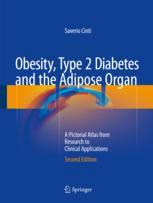

Most ebook files are in PDF format, so you can easily read them using various software such as Foxit Reader or directly on the Google Chrome browser.
Some ebook files are released by publishers in other formats such as .awz, .mobi, .epub, .fb2, etc. You may need to install specific software to read these formats on mobile/PC, such as Calibre.
Please read the tutorial at this link: https://ebookbell.com/faq
We offer FREE conversion to the popular formats you request; however, this may take some time. Therefore, right after payment, please email us, and we will try to provide the service as quickly as possible.
For some exceptional file formats or broken links (if any), please refrain from opening any disputes. Instead, email us first, and we will try to assist within a maximum of 6 hours.
EbookBell Team

0.0
0 reviewsThis richly illustrated book provides a detailed description of the gross anatomy, light microscopy, immunohistochemistry, and electron microscopy of the adipose organ, which comprises subcutaneous and visceral fat depots. Findings in mice of differing genetic backgrounds (obesity prone and resistant) and maintained in standard and various physiologic and pathologic conditions are presented. The latter conditions include chronic cold exposure, warm exposure, fasting, pregnancy–lactation, and obesity. Features of the fetal adipose organ are described in a separate chapter, and results from transgenic mice are also presented when relevant. The human adipose organ is addressed in several chapters that include magnetic resonance and fetal findings. Most of the results regarding the adipose organ anatomy in different physiologic conditions are new, and the story of pink adipocytes (white-to-pink transdifferentiation) is quite innovative. The concept of using browning of the adipose organ as a therapeutic tool for obesity must take into consideration the anatomic and morphologic aspects described here, and the study of pink adipocytes could lead to a better comprehension of breast cancer tumor biology. This book will be of interest to all scientists who deal with obesity and related disorders.